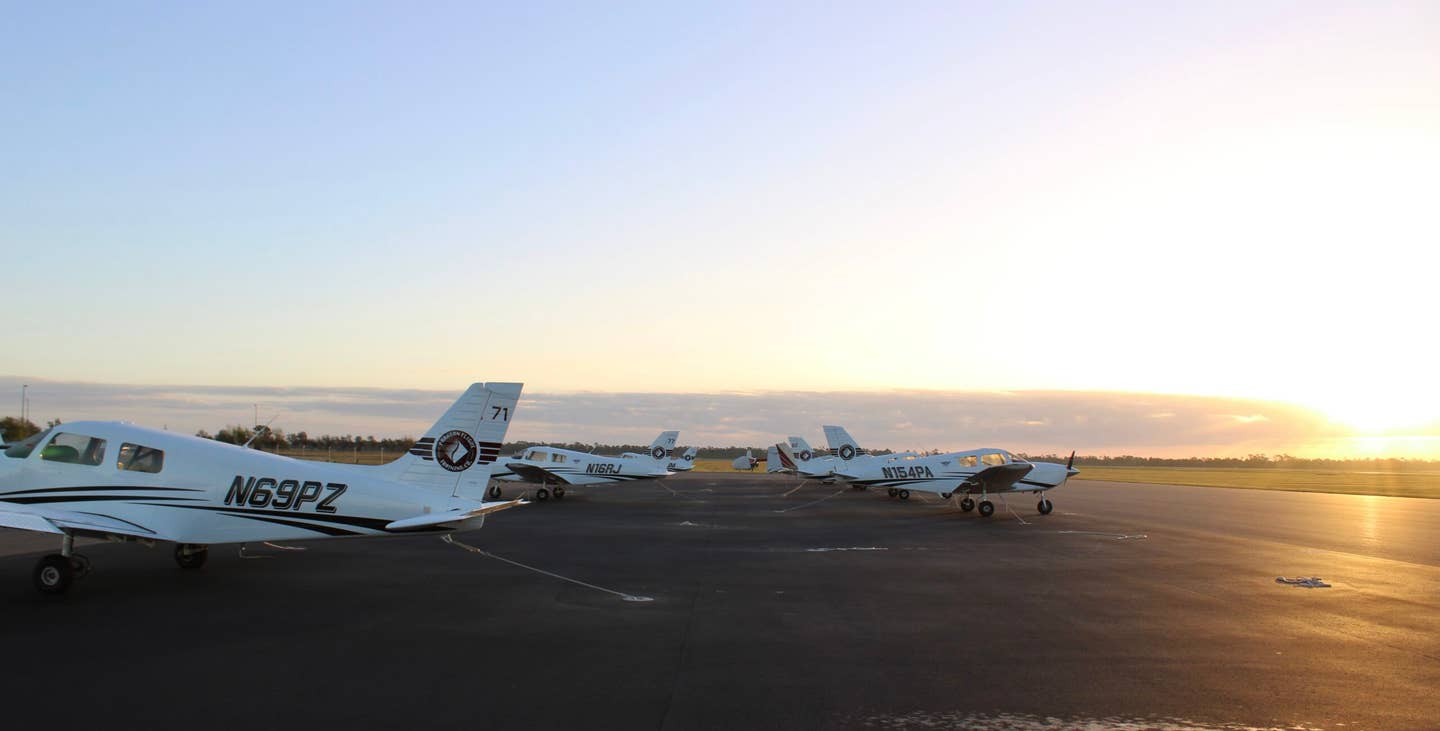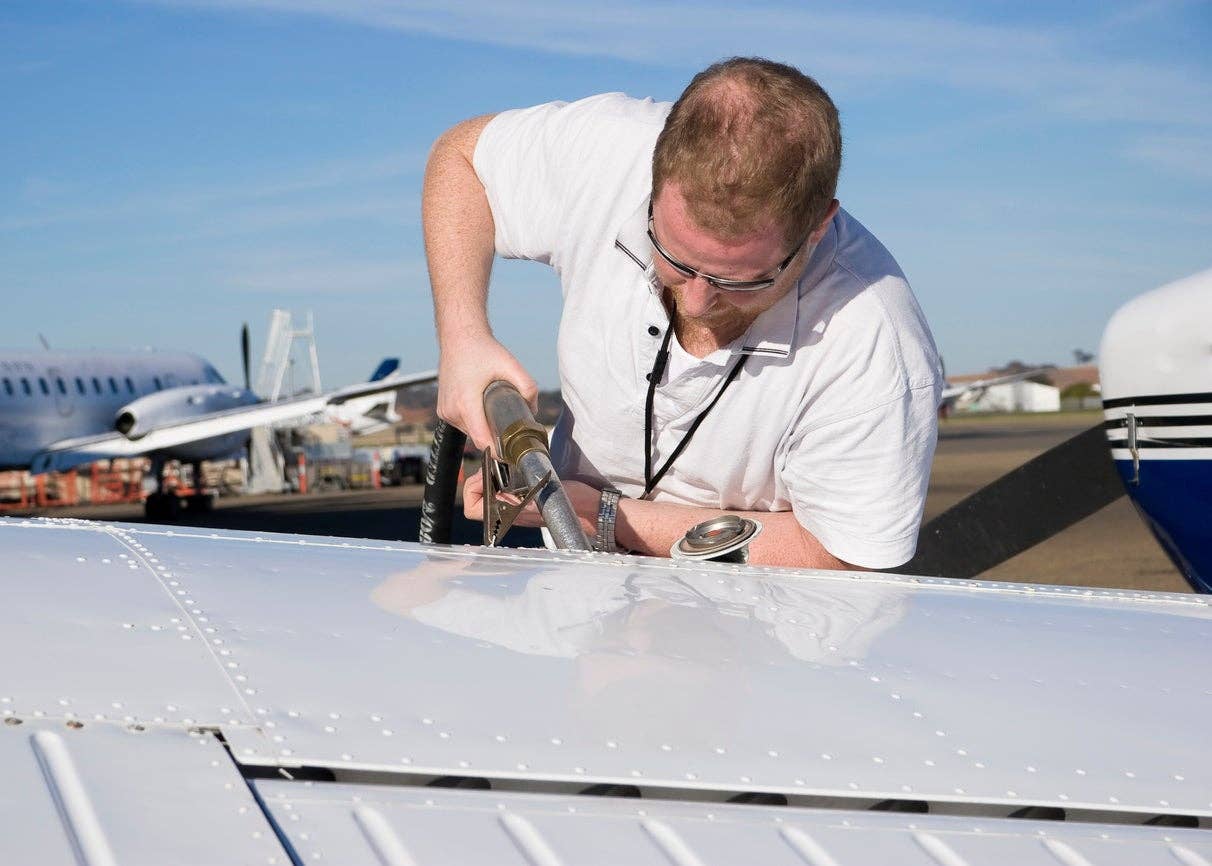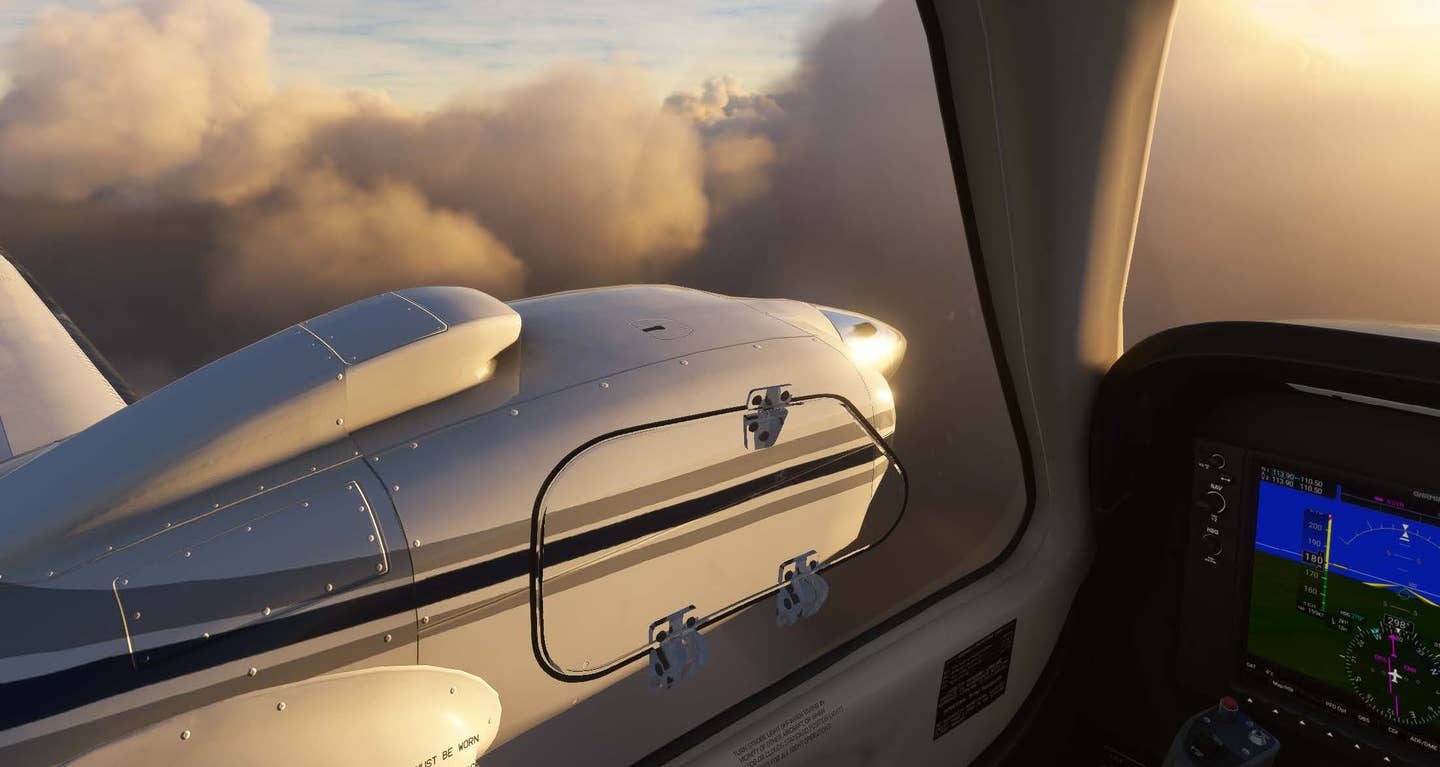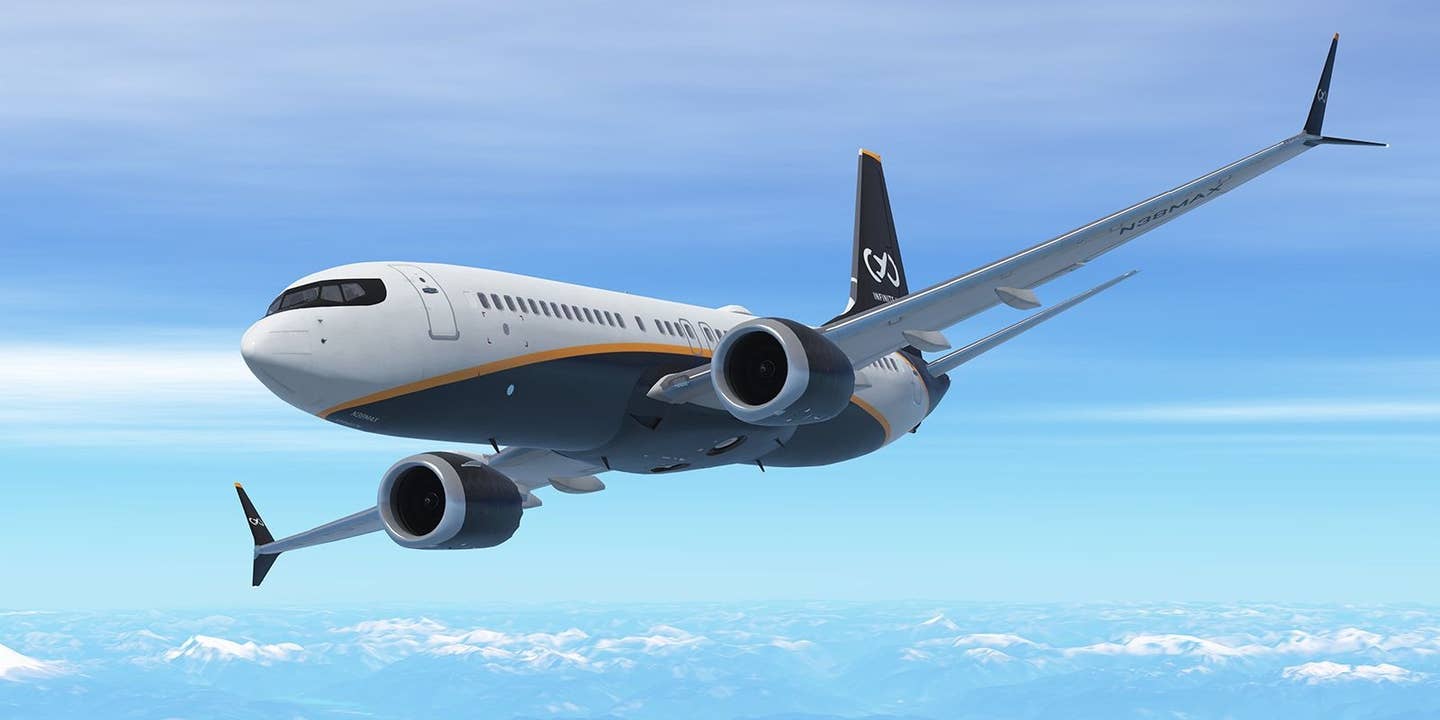
777 Simulator
(June 2011) The captain had completed an entry of the navigation log after passing the previous oceanic waypoint. The FMS, utilizing a series of inertial navigation systems along with two GPS receivers, was tracking the assigned course to an accuracy that was no wider than the cockpit of the 777. The digital display of the altitude pointer indicated that the airplane had fluctuated no more than five feet. The ATC page of the comm screen verified that Shanwick Oceanic had automatically received the position report. No voice calls were required. Life was good.
Well … right up until the moment that the EICAS (engine instrument and crew alerting system) screen annunciated an amber message: “fuel imbalance.”
Anticipating the captain’s request, the copilot pressed a button on the eyebrow of the instrument panel. The fuel synoptic, a schematic diagram, displayed on the center pedestal screen. The diagram confirmed the reason for the EICAS message. Fuel from the right main tank was disappearing faster than from the left main tank. Not good. But why was it happening?
The EICAS now displayed a prompt for the fuel imbalance checklist. The copilot selected the appropriate electronic page. The checklist procedure was short, but it immediately led in a new direction: Is it a fuel leak?
As the copilot initiated the fuel leak checklist, the captain unclipped the intercom handset and pressed the code to call the relief pilot, who was on his rest break in the crew bunk. When the relief pilot groggily answered, the captain explained the problem and requested that he visually inspect the engine and right wing for any evidence of a vapor stream.
In a matter of minutes, the interphone chimed in the cockpit. The captain placed the handset back on his ear and listened to the serious tone of the relief pilot’s voice. The relief pilot confirmed a vapor trail exiting from the right engine.
The captain re-cradled the handset and studied the lower EICAS screen. The copilot had reached a decision item in the checklist. And the decision wasn’t pretty. The right engine had to be shut down. The flight was more than one hour from the nearest suitable alternate.
The captain glanced out the left side window. For a brief second he considered the inky blackness of the North Atlantic on a February afternoon. The blackness was interrupted with tufts of white, etching a checkerboard mosaic onto the churning sea. The ocean was uninviting even from the height of 38,000 feet. For all the state-of-the-art technology stuffed into a long aluminum tube, none of it would make a difference if the airplane were forced to transform itself into a very unseaworthy ocean liner. The captain would have to make a decision that directly affected the safe outcome of his passengers and crew. The decision could very well define his career and the salary that he had earned in his lifetime. No big deal.
Fortunately, the rules of the road were on the captain’s side. The flight was operating under ETOPS (extended twin engine operation) procedures. In the North Atlantic, a twin-engine jet airliner is required to remain within 180 minutes in still air from an alternate airport with one engine inoperative. The alternate airport must have the capability to handle the arrival of the particular airplane type. The fuel on board to reach the alternate(s) at the point most distant on the route must allow for the worst-case scenario of an engine failure, an explosive depressurization or an engine failure accompanied by an explosive depressurization. The parameters also include, but are not limited to, consideration for wind, the use of anti-ice, airborne APU operation and engine performance degradation.
By theory, the flight should not face fuel exhaustion — as long as the leak stops, of course. With an engine shut down, the captain is well aware that he must depart the assigned track. Why? The airplane cannot sustain an altitude of FL 380. It will have to begin a slow drift down. A glance at the engine-out page of the FMC indicates that the airplane is capable of maintaining
FL 220. Now what?
Specific procedures must be followed. Although obtaining a clearance through the appropriate oceanic controlling agency is the best solution, there is no time. In that case, the rules require that the airplane be turned more than 45 degrees from the original course, preferably in the direction of the alternate. But which alternate?
In this scenario, Glasgow, Scotland, was the nearest. It was behind the airplane. Ahead and to the north was Keflavik, Iceland. Unfortunately, a prior ACARS (aircraft communications addressing and reporting system) printout of the area weather indicated that both airports had very similar conditions — and they weren’t balmy. Snow showers, low ceilings and slippery runways existed at both places. Although Iceland didn’t sound as appealing in the month of February, “Kef” had two runways as opposed to Glasgow’s one. And the runways were each approximately 2,000 feet longer than Glasgow’s.
The captain looked at his copilot and announced his decision to divert into Keflavik. In addition to turning away from the track, the initial procedure requires the airplane to parallel the route at an offset of exactly 15 miles. The offset moves the emergency airplane away from any traffic conflicts within the track or any conflicts from parallel tracks. After descending through 28,500 feet, the flight would be below the organized track system and could proceed directly toward Kef.
The interphone chimed again in the cockpit. As the first officer continued the fuel leak checklist, the captain unclipped the handset and put it to his ear. The relief pilot was on the line, requesting entry to the cockpit. When the relief pilot entered, he slid into the jumpseat directly behind the center pedestal. The captain briefed him on the situation.
Before the engine shutdown checklist was completed, the captain selected the alternate page on the left FMC. For a brief moment, his finger remained poised over the line select button for Keflavik. His decision had been made. He pressed. The airplane began a turn off the route. Having selected the 15-mile offset prior to the diversion, the autopilot/flight director system would steer the 777 toward Keflavik while maintaining the required distance away from the track.
In anticipation of the need for a backup source of electrical power, the captain reached above his head to the overhead panel and turned the rotary switch that started the APU. The copilot began to read aloud the items of the engine shutdown checklist. The captain replied with the appropriate responses until all actions had been completed. The right engine was no longer operating.
On the VNAV page of the FMC, the captain pressed the button that selected the engine-out drift-down. The autothrottle system moved the left power lever to the computer-generated setting. The descent began.
The captain turned in his seat and instructed the relief pilot to contact Shanwick Oceanic for a clearance to their alternate. Once that task was completed, the captain had the relief pilot advise the company dispatcher of their circumstances with the satcom radio. Via the automatic reporting system, dispatch would already be notified of the diversion.
As the airplane intercepted the 15-mile offset, the captain picked up the interphone handset and called the number one flight attendant. He briefed her on the situation, offering the time remaining till touchdown in Keflavik. He did not anticipate the need to have the flight attendants initiate their emergency landing preparation for the passengers. A review of the procedures was all that was warranted. The captain advised that he would announce to the passengers the diversion and the status of the airplane.
Only one important item remained. If the airplane continued to Keflavik with its present fuel consumption, it would be touching down over the maximum allowable landing weight, an authorized emergency procedure. Ordinarily, it would not be a problem, but the slippery runway conditions dictated less weight in order to remain within the confines of the available concrete. Fuel dumping would have to occur so that enough would remain to allow for en route endurance and a possible missed approach.
While thinking out loud, the captain completed a rough computation in his head. He instructed the copilot to initiate the fuel dump process and to set the automatic shut-off at 465,000 pounds, just above maximum landing weight.
Even though 20 degrees of flaps was the standard procedure for landing with an engine shut down, because of go-around performance, the copilot recommended 30 degrees. The higher flap setting would allow for a slower approach speed on a snow-compacted runway. The captain agreed, knowing that the airplane would still have the capability to climb in the event of a missed approach.
With all the details considered, the execution of a landing in IFR conditions with one engine shut down was the only remaining challenge. Simple.
So, was this a real event? Yes, except for one detail. I had the luxury of experiencing this scenario in the comfort of a simulator as part of my recurrent training. A colleague of mine was not so fortunate. He experienced an actual fuel leak while en route to JFK from Brazil. Despite the tower being closed for business in the wee hours of the morning, his flight diverted into Bermuda.
My simulator scenario was one of the more realistic training events of my international airline career. Mid-Atlantic diversion? No problem.

Sign-up for newsletters & special offers!
Get the latest FLYING stories & special offers delivered directly to your inbox






